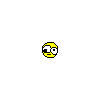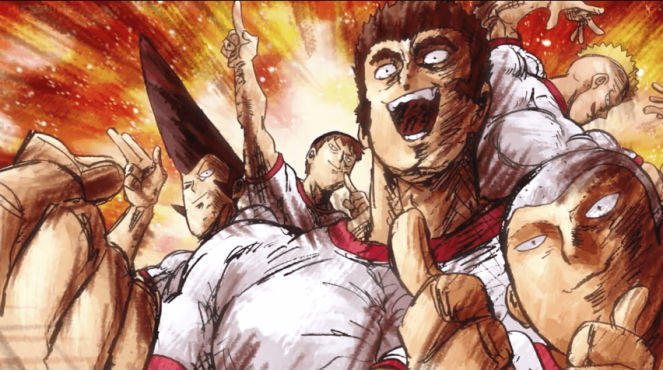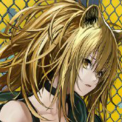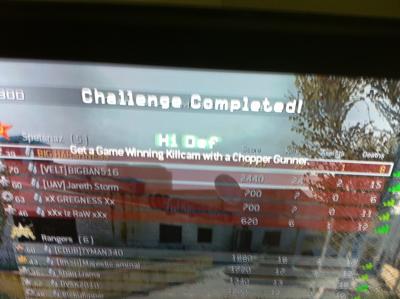-
Content Count
12,157 -
Joined
-
Last visited
-
Days Won
1,309
Posts posted by DeathscytheX
-
-
I finally got my Scar Extended Mags back.
I also have a problem where I get only 3 bars on my connection most of the time. If I get 4 bars, it doesn't matter how shitty my team is, I can still manage to pull some good scores win or lose.
-
http://abcnews.go.com/International/ufo-china-closes-airport-prompts-investigation/story?id=11159531
Pics and Video in link
An unidentified flying object (UFO) forced Xiaoshan Airport in Hangzhou, China to cease operations on July 7. A flight crew preparing for descent first detected the object around 8:40 p.m. and notified the air traffic control department. Aviation authorities responded within minutes, grounding outbound flights and diverting inbound ones to airports in Ningbo and Wuxi.
Eighteen flights were affected. Though normal operations resumed an hour later, the incident captured the attention of the Chinese media and sparked a firestorm of speculation on the UFO's identity.
"It is a hidden U.S. bomber flying toward China," one Internet user wrote on Monday. Another wrote on Sunday night, "In my opinion, the UFO is neither a U.S. missile nor a Russian satellite. Suggestions that it is extraterrestrial are even more preposterous. Everyone, use your head. This is clearly a man-made phenomenon. Would the U.S. or Russia risk provoking China's anger by firing a missile or satellite rocket in Chinese skies, without warning? I believe the Chinese military is responsible for the UFO. It is a new missile or aircraft being tested out."
Fueling speculations further, Hangzhou residents released photos, taken in the afternoon before the delays, of a hovering object bathed in golden light and exhibiting a comet-like tail. Less than an hour before the Xiaoshan airport shut down, residents said they also saw a flying object emitting red and white rays of light.
Resident Ma Shijun was taking a nighttime stroll with his wife when he saw the object.
"I felt a beam of light over my head. Looking up, I saw a streak of bright, white light flying across the sky, so I picked up the camera and took the photo. The time was 8:26 p.m. However, whether the object was a plane, or whether it was Xiaoshan Airport's UFO, I don't have a clear answer," Ma told the Xinhua news agency.
The photos taken by Hangzhou residents may be unrelated to the UFO that shut down Xiaoshan Airport. According to Hangzhou meteorological authorities, residents in the afternoon probably saw light reflecting off of an airplane. As for Ma's nighttime photo, Beijing Planetarium curator Zhu Jing told Xinhua that the object looks just like a plane shining its strobe lamps.
Pchan and Sledgstone reacted to this -
-
Its in the same type as Givin' Static, Early Detection, Big Brother, Amplifier, and Techno Killer.

-
Mixed feelings... Looks bad ass, but definitely no where close to originality. I can see a lot of fan uproar.
-
-
You know all those horrible urban pop songs by rappers on the radio? Well, i work at a night club and i hear every single one about 10 times a night. I've gotten to the point where i know them word by word, and i'm ashamed to say it. And the worst part is they get stuck in my head sometimes !
CrlNyhnw0Io
-
Do you know any good pomegrante mixed drinks?
lol. I completely forgot about this topic. I'm like "What question!?" *checks first page of thread* X'D
damn. Kraken rum... being squid ink in there, would it stain the shit out of clothing if you spilled it?

I dunno! X'D I doubt it. I'm sure its only enough to give it its darker color. Aged rum isnt exactly light. It must be tasteless or else Squid ink is quite delicious. X'D
-
His is among the most enduring *legends in our island’s history.
King Arthur, the gallant warrior who gathered his knights around the Round Table at Camelot and rallied Christian Britons against the invading pagan Saxons, has always been an enigma.
But now historians believe they have uncovered the precise location of Arthur’s stronghold, finally solving the riddle of whether the Round Table really existed.
And far from pinpointing a piece of furniture, they claim the ‘table’ was in fact the circular space inside a former Roman amphitheater.
The experts believe that Camelot could in fact have been Chester Amphitheater, a huge stone-and-wood structure capable of holding up to 10,000 people.
They say that Arthur would have reinforced the building’s 40ft walls to create an imposing and well fortified base.
The king’s regional noblemen would have sat in the central arena’s front row, with lower-ranked subjects in the outer stone benches.
Arthur has been the subject of much historical debate, but many scholars believe him to have been a 5th or 6th Century leader.
The legend links him to 12 major battles fought over 40 years from the Scottish Borders to the West Country. One of the principal victories was said to have been at Chester.
Rather than create a purpose-built Camelot, historian Chris Gidlow says Arthur would have logically chosen a structure left by the Romans.
‘The first accounts of the Round Table show that it was nothing like a dining table but was a venue for upwards of 1,000 people at a time,’ he said.
‘And we know that one of Arthur’s two main battles was fought at a town referred to as the City of the Legions. There were only two places with this title. One was St Albans, but the location of the other has remained a mystery.’
Researchers, who will reveal their evidence in a television documentary this month, say the recent discovery at the amphitheater of an execution stone and a wooden memorial to Christian martyrs suggests the missing city is Chester.
Mr Gidlow said: ‘In the 6th Century, a monk named Gildas, who wrote the earliest account of Arthur’s life, referred both to the City of the Legions and to a martyr’s shrine within it.
'That is the clincher. The discovery of the shrine within the amphitheater means that Chester was the site of Arthur’s court – and his legendary Round Table.’
* King Arthur’s Round Table Revealed is on The History Channel on Monday, July 19, at 9pm.
Sledgstone and Pchan reacted to this -
I liked Norton... sad. I have a feeling that they are just going to throw in a No name, and he will have limited screen time, spending much more of the movie in CG Hulk mode.
-
Ha, I never saw your question Sledge. Tequila doesn't really mix well with anything for me, besides in a margarita. I prefer blanco (clear) like Patron and Jose Especial, because these are much more satisfying straight than Reposado (gold/yellow color). Reposado Tequila like 1800 is outstanding for margaritas, but are pretty brutal straight... I guess it isn't bad as a shot, but I like drinking my poison on the rocks.
I found a few new favorites since this topic was made

This is now officially my favorite rum. 94 proof and delicious. The spices in this rum are superior to Captain Morgan, but are very strong. Its close to the old school Atomic Fireball candy. It had a nice burn drinking it straight, but its sweet aftertaste is pure delight. It's colored with squid ink... that might gross some people out, but I think its awesome. LOL It's probably the best tasting spiced rum out there. If the spice is to much, it goes good with cola.

Jameson Irish Whiskey... mmmm Smooth. My new special occasion drink. Don't tarnish it with a mix.

This is the best shit ever.... If you had a bad day, this is where its at.... Its suppose to be for mix drinks, straight it tastes like lighter fluid.... but damn it will make you feel good FAST. 151 Proof! X'D

Nifty beer I found. Its a dark beer obviously, and tastes like a black lager with a hint of chocolate coffee bean aftertaste. Pretty good stuff. Kinda pricey though. Its more of a novelty beer than anything else.
Hopefully none of these images have anti-hotlink scripts
-
They looked as good as they always have. CGI would have been stupid. I do have to say the cloak and going in and out of it was to obviously CGI. The old way worked better IMO.
-
Walton Goggins out-acted everyone, and it wasn't even the star of the film. lol
-
Critics also said A-Team sucked..... and it didn't. Critics are the worst source to go by.
-
A-Team is definitely this summers best movie so far. I think only Inception has a chance to top it for me.
-
Its mediocre. The Characters were weak, you never really care about them. The predators come off as weak seeing as their is more than one taking on a band of humans, when it only took one Predator in the first film. The concept was neat, but failed to produce.
It wasn't shitty by any means. It was certainly much better than AVP. It just failed to live up to the standard.
-
In my head?
wA2CDJWx5So
-
The difference is that back when, The honest, common man served in our government... now its just the career politician.
-
Because Obama's campaign, like all other politicians, are funded by Big Oil.
-
http://online.wsj.com/article/SB10001424052748703609004575355072271264394.html
HIV research is undergoing a renaissance that could lead to new ways to develop vaccines against the AIDS virus and other viral diseases.
In the latest development, U.S. government scientists say they have discovered three powerful antibodies, the strongest of which neutralizes 91% of HIV strains, more than any AIDS antibody yet discovered. They are now deploying the technique used to find those antibodies to identify antibodies to influenza viruses.
The HIV antibodies were discovered in the cells of a 60-year-old African-American gay man, known in the scientific literature as Donor 45, whose body made the antibodies naturally. The trick for scientists now is to develop a vaccine or other methods to make anyone's body produce them as well.
That effort "will require work," said Gary Nabel, director of the Vaccine Research Center at the National Institute of Allergy and Infectious Diseases, who was a leader of the research. "We're going to be at this for a while" before any benefit is seen in the clinic, he said.
The research was published Thursday in two papers in the online edition of the journal Science, 10 days before the opening of a large International AIDS Conference in Vienna, where prevention science is expected to take center stage. More than 33 million people were living with HIV at the end of 2008, and about 2.7 million contracted the virus that year, according to United Nations estimates.
Vaccines, which are believed to work by activating the body's ability to produce antibodies, eliminated or curtailed smallpox, polio and other feared viral diseases, so they have been the holy grail of AIDS research.
Last year, following a trial in Thailand, results of the first HIV vaccine to show any efficacy were announced. But that vaccine reduced the chances of infection only by about 30%, and controversy erupted because in one common analysis the results weren't statistically significant. That vaccine wasn't designed to elicit the new antibodies.
The new discovery is part of what Wayne Koff, head of research and development at the nonprofit International AIDS Vaccine Initiative, calls a "renaissance" in HIV vaccine research.
Antibodies that are utterly ineffective, or that disable just one or two HIV strains, are common. Until last year, only a handful of "broadly neutralizing antibodies," those that efficiently disable a large swath of HIV strains, had been discovered. And none of them neutralized more than about 40% of known HIV variants.
But in the past year, thanks to efficient new detection methods, at least a half dozen broadly neutralizing antibodies, including the three latest ones, have been identified in peer-reviewed journals. Dennis Burton of the Scripps Institute in La Jolla, Calif., led a team that discovered two broadly neutralizing antibodies last year; he says his team has identified additional, unpublished ones. Most of the new antibodies are more potent, able to knock out HIV at far lower concentrations than their previously known counterparts.
HIV is a highly mutable virus, but one place where the virus doesn't mutate much is where it attaches to a particular molecule on the surface of cells it infects. Building on previous research, researchers created a probe, shaped exactly like that critical site, and used it to attract only those antibodies that efficiently attack it. That is how they fished out of Donor 45 the special antibodies: They screened 25 million of his cells to find 12 that produced the antibodies.
Donor 45's antibodies didn't protect him from contracting HIV. That is likely because the virus had already taken hold before his body produced the antibodies. He is still alive, and when his blood was drawn, he had been living with HIV for 20 years.
While he has produced the most powerful HIV antibody yet discovered, researchers say they don't know of anything special about his genes that would make him unique. They expect that most people would be capable of producing the antibodies, if scientists could find the right way to stimulate their production.
Dr. Nabel said his team is applying the new technique to the influenza virus. Like HIV, influenza is a highly mutable virus—the reason a new vaccine is required every year.
"We want to go after a universal vaccine" by using the new technique to find antibodies to a "component of the influenza virus that doesn't change," said NIAID director Anthony Fauci. In principle, Dr. Fauci said, the technique could be used for any viral disease and possibly even for cancer vaccines.
Some of the new HIV antibodies discovered over the past year attack different points on the virus, raising hopes that they could work synergistically.
In unpublished research, John Mascola, deputy director of the Vaccine Research Center, has shown that one of Dr. Burton's antibodies neutralizes virtually all the strains that are resistant to the antibody from Donor 45. He also found the reverse: The antibody from Donor 45 disables HIV strains resistant to one of Dr. Burton's best antibodies. Only one strain out of 95 tested was resistant to both antibodies, he said. Dr. Mascola is one of the authors of Thursday's papers.
Researchers say they plan to test the new antibodies, likely blended together in a potent cocktail, in three broad ways.
First, the antibodies could be given to people in their raw form, somewhat like a drug, to prevent transmission of the virus. But they would likely be expensive and last in the body for a limited time, perhaps weeks, making that method impractical for all but specialized cases, such as to prevent mother-to-child transmission in childbirth.
The antibodies could also be tested in a "microbicide," a gel that women or gay men could apply before sex to prevent infection.
The antibodies might even be tried as a treatment for people already infected. While the antibodies are unlikely to completely suppress HIV on their own, say scientists, they might boost the efficacy of current antiretroviral drugs.
Dr. Nabel said that the Vaccine Research Center has contracted with a company to produce an antibody suitable for use in humans so that testing in people could begin.
A second way to use the new research is to stimulate the immune system to produce the antibodies. Jonas Salk injected people with a whole killed polio virus, and virtually everyone's immune system easily made antibodies that disabled the polio virus. But for HIV, the vast majority of antibodies are ineffective. Now, scientists know the exact antibodies that must be made—those found in Donor 45 and in Dr. Burton's lab, for example. So researchers need "a reverse engineering technology" to find a way to get everyone to produce them, said Greg Poland, director of vaccine research at Mayo Clinic in Rochester, Minn.
That's what scientists at Merck & Co. have done. In a study published this year in the Proceedings of the National Academy of Sciences, the Merck Scientists knew that an old antibody, weaker than the newly discovered ones, attaches to a particularly vulnerable part of HIV. They created a replica of that piece of the virus to train the immune system to produce antibodies aimed at that exact spot. It was a painstaking process, requiring researchers to add chemical bonds to stabilize the replica so that it wouldn't collapse and lose its shape. Eventually, Merck was able to make experimental vaccine candidates capable of spurring guinea pigs and rabbits to produce antibodies that home in on the target site and neutralize HIV. Those vaccines weren't nearly powerful enough, but, said Dr. Koff, Merck's research provides a "proof of principle" that reverse engineering can work for the much stronger new antibodies.
There are other potential pitfalls. There is evidence that Donor 45's cells took months or possibly even years to create the powerful antibodies. That means scientists might have to give repeated booster shots or devise other ways to speed up this process.
Finally, there are experimental methods that employ tactics such as gene therapy. Nobel laureate David Baltimore is working on one such approach.
His team at the California Institute of Technology in Pasadena, Calif., has stitched genes that code for antibodies into a harmless virus, which they then inject into mice. The virus infects mouse cells, turning them into factories that produce the antibodies.
-
Cold Fusion... if only it was real! lol
I would so build the X, Thats really the only thing that could power such a God suit.
-
-
I wish it was 78 here... try 95, feels like 99.

-
http://gizmodo.com/5578740/this-space-nuke-explosion-was-the-ultimate-firecracker

In 1962, the US government thought it might be a good idea to send a hydrogen bomb hundreds of miles into the air and detonate it. Just, you know, to see what happened. Decades later, now you can too.
The recently declassified image was collected by Peter Kuran for his titillatingly titled documentary Nukes In Space. NPR has the full story here, but this is the juicy bit:
The plan was to send rockets hundreds of miles up, higher than the Earth's atmosphere, and then detonate nuclear weapons to see: a) If a bomb's radiation would make it harder to see what was up there (like incoming Russian missiles!);
 If an explosion would do any damage to objects nearby; c) If the Van Allen belts would move a blast down the bands to an earthly target (Moscow! for example); and - most peculiar - d) if a man-made explosion might "alter" the natural shape of the [Earth's magnetic] belts.
If an explosion would do any damage to objects nearby; c) If the Van Allen belts would move a blast down the bands to an earthly target (Moscow! for example); and - most peculiar - d) if a man-made explosion might "alter" the natural shape of the [Earth's magnetic] belts.So, that's what the government was up to in 1962. You know, normal stuff, like trying to alter the Earth's magnetic field and seeing if we could nuke Russia from space.
Full Story and Video here:
http://www.npr.org/templates/story/story.php?storyId=128170775




the song stuck in yer head
in Random
Posted · Report reply
VK16w_Esrno